

Industry Information 2023-06-13
In the past two years, with the continuous increase of environmental protection measures, sand mining in multiple river channels has been prohibited. Machine-made sand, which is made by crushing and grinding rocks, ores, solid waste resources, and other materials, is gradually becoming a substitute for natural sand and stone, and the application of machine-made sand has become a global trend. However, in practical production applications, there may also be some problems that affect the quality of machine-made sand, such as excessive needle and flake content, high fineness modulus, and stone powder content. How can we improve the quality of machine-made sand?

The quality of finished sand and gravel aggregates is first determined by the quality of the sand and gravel raw materials themselves. The processed quality has a significant impact on the performance of concrete, and to a certain extent, it affects the cement dosage of concrete. Therefore, strict control must be exercised during the production process. Especially the quality, weak particle content, mud content, needle like content, stone powder content, fineness modulus, and water content of artificial sand crushing raw materials have a significant impact on the performance of concrete, and are difficult to control during the production process of sand and stone materials. It is necessary to prevent various quality problems as much as possible, improve the quality of the final product of sand and stone aggregates, and ensure the quality of concrete. This article will share with you several elements of quality control in the production of machine made sand.
01. Quality control of sand and gravel raw materials
1. Rock, ore, tailings
Before mining raw materials, it is necessary to remove the top cover layer of the material yard and ensure that the surface of the mining layer is free of grass roots, covering soil, and other substances. When cleaning the covering layer, it is best to ensure that it is completed in one go, and a certain width of the protective zone needs to be left to avoid the vibration generated during the mining of raw materials, which may cause the covering soil at the boundary to slide off and mix with the raw materials again. In response to the varying depths of mudstone burial and high groundwater levels, it is necessary to excavate drainage channels and lower groundwater levels before mining; When mining, mining should be carried out in a sequence from low to high. For the overburden layer, ensure that the width of the stripping boundary is greater than the planned mining area by more than 0.8m. The depth of mining should be strictly controlled to ensure that the thickness of the reserved layer is>0.2m.
2. Construction waste, waste concrete blocks, etc
It is suggested that the raw materials of Construction waste should be pretreated first, including manual sorting of large decoration waste, reduction of oversized materials by hydraulic hammer, sorting and removal of oversized sundries, first crushing of Construction waste, first screening, separation of miscellaneous soil, and separation of steel bars and iron products from Construction waste by iron remover, so as to ensure the quality of finished materials after crushing and screening!
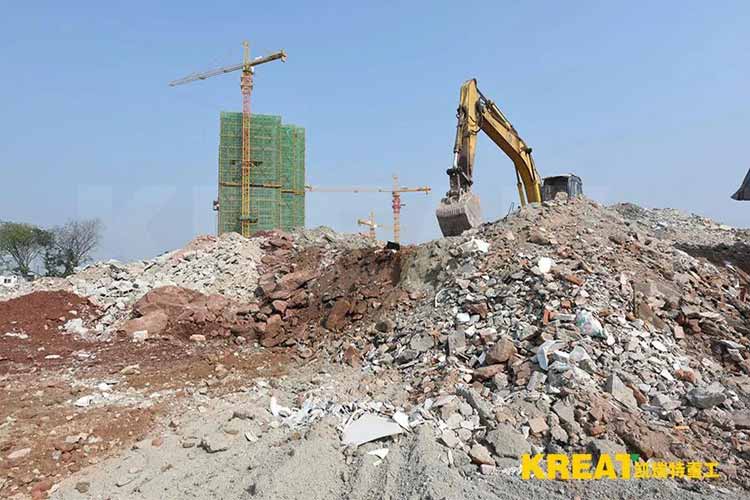
02. Control of Soft Particle Content
The content of weak particles in concrete should not exceed 5% -15%. Excessive weak particles have a significant impact on the strength, wear resistance, and durability of concrete. Due to the complexity and high cost of the treatment process for weak particles, manual control is usually used at the source of the material, mainly through visual analysis and judgment. In general engineering, the lower part of the weakly weathered zone is used as the boundary between the useless layer and the useful layer of the material yard, and the useless layer of the material yard is used as waste material. In addition, the construction of the crushing raw material yard should be reasonably organized, and the mining procedure of first stripping the useless layer and then mining the useful rock should be adopted to achieve the goal of reducing the content of weak particles. For the broken raw materials with less obvious strong and weak weathering layers, multiple dissolution channels, and caves, the first step is to distinguish them with the naked eye, discard them in advance, or use high-pressure water flushing to ensure that the content of weak particles meets the quality requirements of sand and gravel materials.
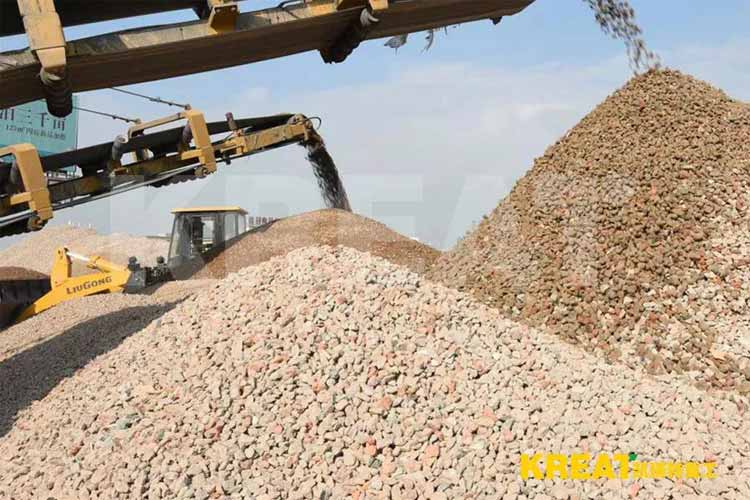
03. Control of mud content
The production process of mechanical sand crushing raw materials generally does not produce mud blocks, mainly controlling the mud content of sand and stone materials. The control of mud content in finished sand and stone materials includes source control, system processing technology control, and production organization measures.
The source control process mainly involves organizing the construction of the material yard reasonably, strictly distinguishing between weakly weathered and strongly weathered boundaries, and treating strongly weathered materials as waste materials.
System processing process control program: In dry production, the trace amount of mud in the coarsely crushed rock is separated and processed, and particles of 0-200mm are screened out. In wet production, a multi-stage washing machine is generally designed and specialized cleaning equipment is set up for treatment, that is, all 0-40mm rocks are fed into the mud washing machine. In order to wash away the mud blocks, a washing and dehydration process is specially set up to clean the finished coarse aggregate, effectively ensuring that the mud content of the aggregate meets the standard.
The production organization measures mainly prohibit unrelated equipment and personnel from entering the finished material storage yard; The surface of the stacking site should be flat, with appropriate slopes and drainage facilities; For large storage yards, the ground should be covered with clean material with a particle size of 40-150mm and a compacted stone cushion layer; The storage time of finished materials should not be too long, and it is best to achieve timely turnover and use.
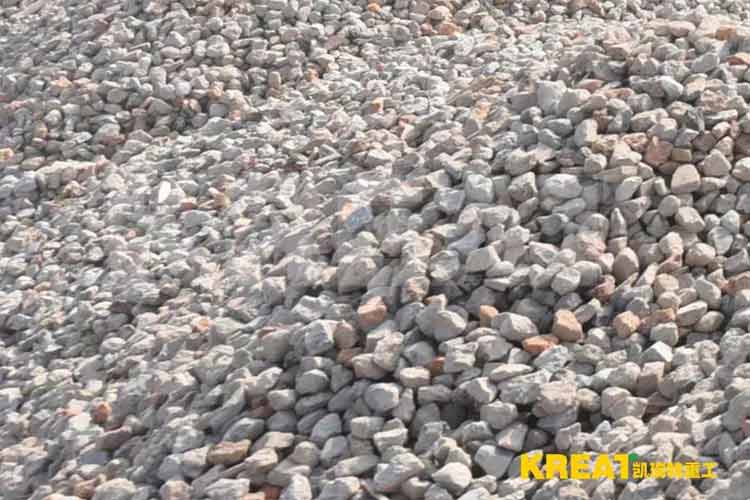
04. Control of needle and flake content
The quality control measures for the needle and flake content of artificial coarse aggregate mainly rely on the selection of equipment, followed by adjusting the block size of the feed in the production process.
Due to the different mineral composition and structure of various crushed raw materials, the particle shape and grading of the crushed raw materials are also different. The hard quartz sandstone and various intrusive Igneous rock have the worst grain shape, and the content of acicular schistose is high, while the content of acicular schistose in moderately hard limestone and dolomitic limestone is low. Through a large number of experiments, it has been proven that different crushing stations have different effects on producing needle like content. The needle like content of coarse aggregate produced by jaw breaking is slightly higher than that by cone breaking, while the needle like content of coarse aggregate produced by counter impact breaking, especially hammer breaking, is significantly reduced.
The needle flake content of coarse crushing is greater than that of medium crushing, and the needle flake content of medium crushing is also greater than that of fine crushing. The higher the crushing ratio, the greater the needle flake content. In order to improve the particle shape of the aggregate, the production process should try to reduce the block size before coarse crushing and make use of the small and medium stones after coarse crushing and medium crushing to make sand. How can we improve the quality of machine made sand? By using finely crushed small and medium-sized stones as the finished product of coarse aggregate, the needle like content can also be strictly controlled.
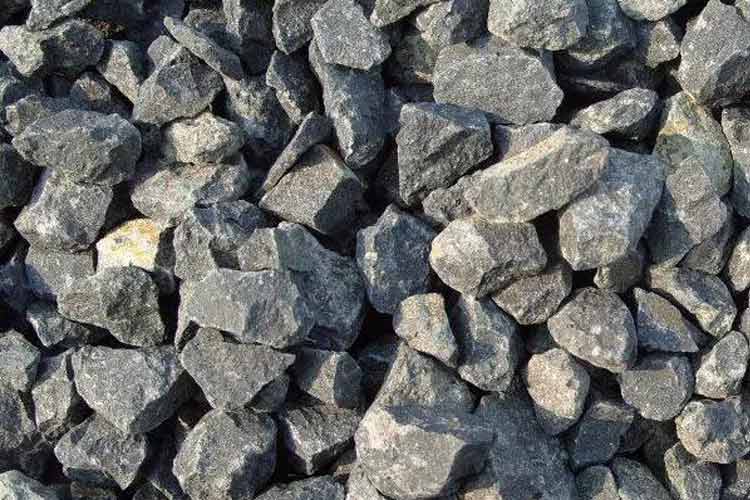
05. Control of Stone Powder Content
The content of artificial sand and stone powder refers to the content of particles less than 0.16mm in artificial sand. Particles less than 0.08mm in artificial sand and stone powder can be considered as an inert admixture. An appropriate content of stone powder can improve the workability of concrete, enhance its compactness, and be beneficial for improving its performance.
In the dry sand production process, the stone powder content of artificial sand is generally high. Different screens can be replaced according to the requirements of different construction for stone powder to achieve control of the stone powder content.
The stone powder content of artificial sand in the wet sand making process is generally low, and most projects require the recovery of some stone powder to meet the needs of the project. There are two main methods for recovering stone powder from artificial sand in hydropower projects: mechanical recovery and manual recovery. In large-scale artificial sand and stone production or narrow engineering sites, a stone powder recycling workshop (also known as a fine sand recycling workshop) needs to be set up in the process, which means that the stone powder taken away by the spiral classifier from the screening workshop and sand making workshop flows through a collecting basin and is then recycled. In small-scale artificial sand and stone production or projects with spacious sites, manual recycling is also used to control the content of stone powder in artificial sand. That is, the overflow water discharged by the sand washing machine during the production process is naturally stored and dehydrated, and the fine sand after natural storage and dehydration can be added using a loader and dump truck transportation. In order to effectively control the content of stone powder, the following measures are often taken:
(1) Effectively control the amount of stone powder added through continuous experimentation.
(2) Attach a vibrator to the wall of the stone powder adding hopper, and install a spiral classifier under the hopper. The spiral classifier is used to evenly add the finished sand to the conveyor belt machine, so that the stone powder can be evenly mixed.
(3) The wastewater treatment workshop should be located as close as possible to the finished sand tape machine, which can be used for smooth transportation. After being dried by the filter press, the stone powder is processed into loose powder by a double roller crusher to prevent the stone powder from forming clumps.
(4) In the overall construction layout, it is necessary to consider a stone powder storage yard, which can adjust the addition amount and reduce the water content of the finished sand to a certain extent through natural dehydration.
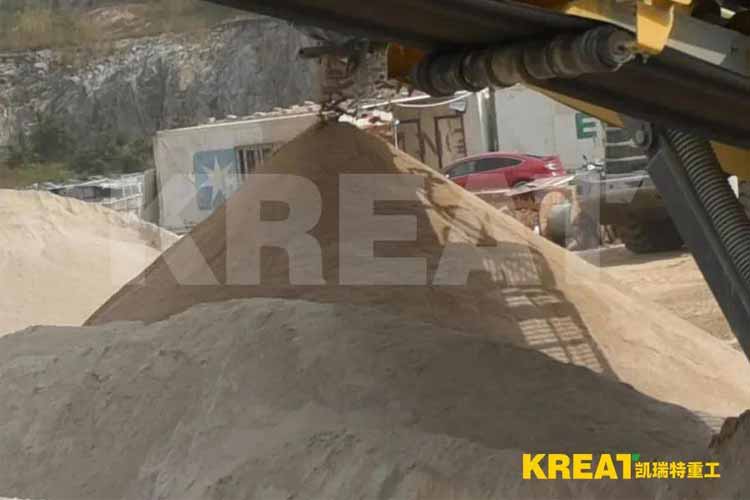
06. Control of fineness modulus
The finished sand should meet the requirements of hard texture, cleanliness, and good grading, for example, the fineness modulus of concrete sand between 2.7 and 3.2 is more suitable. Generally controlled within the range of 2.8 ± 0.1, the fineness modulus of sand for dry mixed mortar can be controlled within the range of 2.3 ± 0.1. We usually adopt the following technical measures to control and adjust the fineness modulus of finished sand:
1. Purchase Kreat crawler mobile crushing and screening equipment to ensure high-quality and cost-effective crushing and screening grading;
2. Reduce the fineness modulus of finished sand by reducing the feed volume and particle size of the feed hopper, or by adjusting the feed volume or particle size of the crawler moving crushing station;
3. Adopting a combination of tracked mobile crushing station, tracked mobile screening station, and tracked mobile sand making machine for sand production, and correctly setting the operating parameters of each equipment, such as linear speed, to control the fine particles of finished sand, increase the content of intermediate graded particles, and adjust the grading of finished sand;
4. When stacking finished sand, try to slow down the slope of the material pile as much as possible to avoid changes in grading caused by segregation.
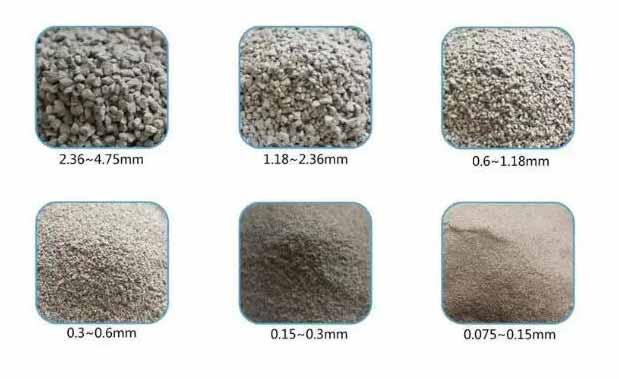
07. Control of Water Content
In order to stabilize and reduce the water content to the specified range, mechanical dehydration is currently the main method used in large projects, while natural dehydration is the main method used in small and medium-sized projects. In addition, strict adherence to operating rules is necessary in production, and reasonable transformation of the sand storage bin can effectively control the moisture content of artificial sand.
The following measures are generally taken:
(1) In general system processes, the first step is to use machinery to remove most of the moisture from the sand. At present, the most commonly used technology is the vibrating screen dehydration process. After being dehydrated by a linear dehydration screen, the sand can be removed from the original moisture content of 20% -23% to 14% -17%; There are also vacuum dewatering and centrifugal dewatering that have good dewatering effects and correspondingly high investment costs.
(2) Artificial sand storage dehydration and artificial sand extraction are carried out separately. Generally, after 3-5 days of storage dehydration, the water content can be reduced to within 6% and stable.
(3) Mixing dry method artificial sand and dehydrated screen artificial sand into the finished sand bin can reduce the water content of the sand.
(4) Install a rain shelter at the top of the finished sand bin, pour concrete floors at the bottom of the sand bin, and install blind ditch drainage facilities. After each warehouse is filled with materials, the blind ditch should be cleaned once to accelerate the natural dehydration time and effectively reduce the water content of the finished sand.

Mechanical sand processing can use Kreat crawler mobile crushing and screening equipment, which has a large production capacity, high crushing ratio, high processing capacity, good product particle shape, simple operation, convenient maintenance, and can achieve rapid transfer operations; These core components of the crushing and screening equipment are all from internationally renowned manufacturers. The equipment has stable performance and comes with environmental protection devices, which can effectively protect the environment. It can ensure the quality of machine sand and control the production cost of machine sand, with extremely high cost-effectiveness.
